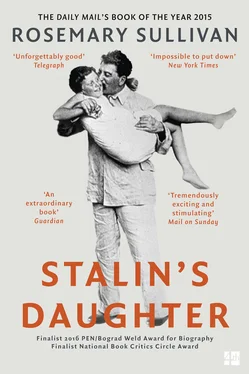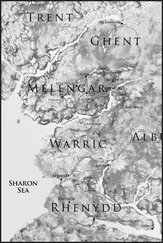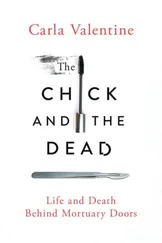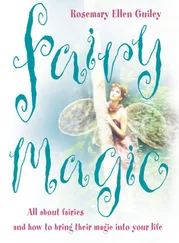The Qantas flight to Rome landed punctually, but Rayle’s relief soon turned to dread as he heard the announcement that the flight would be delayed. The plane had developed mechanical difficulties. The two sat in the departure lounge waiting as minutes turned to hours. Rayle looked at Svetlana. She, too, had begun to be agitated. To cope with the mounting tension, Rayle got up periodically to check the arrivals desks. He knew that the regular Aeroflot flight from Moscow arrived at 5:00 a.m. and a large delegation from the Soviet Embassy always came to greet the diplomatic couriers and the various dignitaries arriving or departing. Members of the Aeroflot staff were already beginning to open their booth. Finally, the departure for Rome was announced. At 2:45 a.m. the Qantas flight for Rome was airborne at last. 16
As they were in midair, a cable about the defector arrived at the American Embassy in New Delhi. In Washington Donald Jameson, who served as CIA liaison officer to the State Department, had informed Deputy Undersecretary of State Foy Kohler of the situation. Kohler’s reaction was stunning—he exploded: “Tell them to throw that woman out of the embassy. Don’t give her any help at all.” 17Kohler had recently served as American ambassador to the USSR and believed that he had personally initiated a thaw in relations with the Soviets. He didn’t want the defection of Stalin’s daughter, especially coinciding with the fiftieth anniversary of the Russian Revolution, muddying the waters. When the embassy staff read the flash cable rejecting Svetlana’s appeal for asylum, they replied, “You’re too late. They’ve gone. They’re on their way to Rome.” 18
The staff failed to check the status of the Qantas flight. Had they discovered that Svetlana and Rayle were sitting for almost two hours in the airport lounge and could have been recalled, Svetlana would have been driven back to the embassy and “kicked out.” The whole course of her life would have gone very differently. But Svetlana’s life always seemed to dangle on a thread, and chance or fate sent her one way rather than another. She would come to call herself a gypsy. Stalin’s daughter, always living in the shadow of her father’s name, would never find a safe place to land.
PART ONE
Chapter 1
That Place of Sunshine

Family group, c. 1930. Standing, from left: Mariko and Maria Svanidze, Stalin’s sisters-in-law from his first marriage. Seated in center, from left: Alexandra Andreevna Bychkova (Svetlana’s nanny), Nathalie Konstantinova (governess), and Svetlana’s maternal aunt Anna Redens. Front row, from left: Svetlana and her brother, Vasili, with Nikolai Bukharin’s daughter sitting on his knee. Standing on right: Sergei Alliluyev, Svetlana’s maternal grandfather.
(Svetlana Alliluyeva private collection; courtesy of Chrese Evans)
Over her lifetime, Svetlana often would take out the photographs from her early childhood and muse over them, experiencing that lovely, brutal nostalgia of photos trapping time. Her mother had always been the one with the camera taking the pictures. Everyone at the family gatherings was so young and alive, so simple and ebullient, wearing a picnic face. The first six and a half years of her life, until her mother’s death in 1932, were, in Svetlana’s mind, the years of sun. She would speak of “that place of sunshine I call my childhood.” 1
Who can live without personal retrospect? We will always glance back to our childhood, for we are shaped deep in our core by the impress of our parents, and we will always wonder how that molding determined us. Svetlana willfully believed in her happy childhood, even as she gradually understood that it was secured by untold bloodshed. What was it about this strange childhood that she would always turn to it for solace?
Svetlana grew up in the Kremlin, the citadel of the tsars, a walled fortress on the edge of the Moskva River, almost a small autonomous village but with imposing towers, cathedrals, and palaces centered on Cathedral Square with massive gates opening onto Red Square and the city beyond. One might think this royal fortress was impossibly grand, but when she was born there in 1926, the second child of Joseph and Nadezhda (“Nadya”) Stalin, the Russian Revolution was only nine years old. The public would always see her as the princess in the Kremlin, but her father’s Bolshevik discipline dictated a relatively modest life.
The Stalins lived in the old Poteshny Palace, a three-story building erected in 1652. It was known as the Amusement Palace and served as a theater for comic performances until, in the nineteenth century, it housed the offices of the Okhrana, the tsar’s secret police. The Poteshny retained its elegant theatrical chandeliers and carpeted staircase, up which the Stalins climbed to their gloomy, high-ceilinged apartment on the second floor.
Svetlana remembered that apartment: “There was [a room] for the governess, and a dining room large enough to have a grand piano in it. . . . In addition there was a library, Nadya’s room, and Stalin’s tiny bedroom in which stood a table with telephones.” 2There were two rooms for the children (she shared hers with her nanny), a kitchen, the housekeeper’s room, and two bathrooms. Wood-burning stoves heated all the rooms. As she described it, “it was homely, with bourgeois furniture.” Families of other Bolshevik leaders lived across the lane in the Horse Guards building and casually dropped by.
In keeping with the ideology of the Party, there was no private property. Everything belonged to the state, down to the wineglasses and silverware, which meant, in the end, that everything was up for grabs. In the early days, even Party members had ration cards for food, but their use was hypothetical. In a country where the populace was starving, there was always enough food for the intimate soirees when the Party magnates gathered in one another’s apartments. All the leaders were assigned one of the country dachas abandoned by the rich upper classes who had fled in the early days of the Revolution.
When Svetlana was born, on February 28, she entered an already crowded household. Her brother Vasili had been born five years earlier, on March 21, 1921. The story went around that Nadya, demonstrating Bolshevik austerity and an iron will, had walked to the hospital after dinner to deliver her son. Once the ordeal was over, she phoned home to congratulate Stalin. 3Svetlana’s half brother Yakov Djugashvili, the child of Stalin’s first marriage, had also joined the household in 1921. Yakov was nineteen years older than Svetlana and would become her champion until his brutal death in a Nazi POW camp.
Family life had a Chekhovian quality, with relatives wandering into and out of the Kremlin apartment. There were two branches of the family: the Alliluyevs and the Svanidzes. Nadya’s own family constantly visited. By now the large clan included Nadya’s parents, Olga and Sergei Alliluyev; her brothers, Fyodor and Pavel; Pavel’s wife, Eugenia (“Zhenya”); her sister, Anna; and Anna’s husband, Stanislav Redens. All the family members would come to play tragic parts in the Stalin narrative.
The Svanidze branch arrived from Georgia in 1921, shadows out of Stalin’s past. In 1906, when the Georgian-born Joseph Stalin was still just a local agitator fomenting revolution under the code name Soso, he married the sister of a school friend and fellow underground revolutionary, Alexander (“Alyosha”) Svanidze. In those prerevolutionary days, when the triumph of the Bolsheviks seemed impossibly distant, Svanidze’s three sisters ran an haute couture fashion house in Tiflis (Tbilisi), called Atelier Hervieu. The waiting room was always full of counts, generals, and police officers. While the sisters fitted the dress of a general’s wife in one room, the revolutionaries discussed their plans for sabotage next door and hid their secret documents inside the stylish mannequins. 4
Читать дальше












![John Bruce - The Lettsomian Lectures on Diseases and Disorders of the Heart and Arteries in Middle and Advanced Life [1900-1901]](/books/749387/john-bruce-the-lettsomian-lectures-on-diseases-and-disorders-of-the-heart-and-arteries-in-middle-and-advanced-life-1900-1901-thumb.webp)
